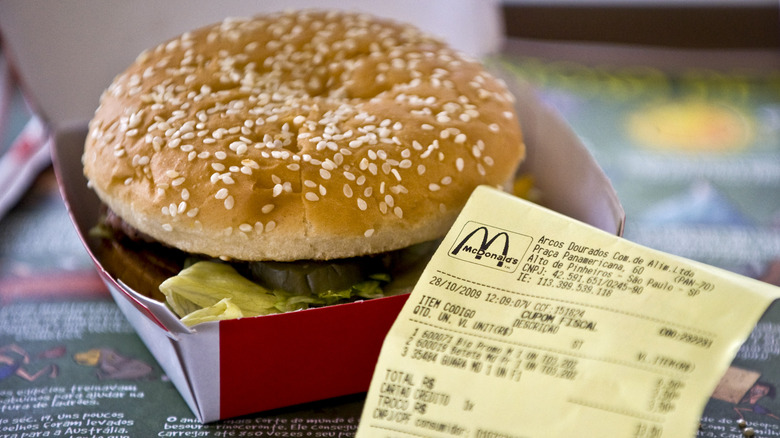Fast Food Prices Are Predicted To Increase Even More In 2022
Recent years have brought some incredibly difficult challenges for both consumers and those working in the food and restaurant industries. From shut downs due to the COVID-19 pandemic and shortages due to supply chain issues to labor shortages and more, the latest hurdle for everyone is inflation. In December 2021, the U.S. Department of Labor's Bureau of Labor Statistics (BLS) reported that fast food prices increased by 8% in the last year. That's the largest increase in fast food prices in over 20 years (via New York Times).
According to CNN, the spike in fast food prices is affecting food-insecure homes and those living under the poverty line more than anyone. In fact, citing a Census Bureau study, the outlet said a whopping 42 million Americans said they didn't have enough food because they couldn't afford it and noted that because many CEOs don't want to absorb the high costs of increasing products and labor, they are frequently passed off to their consumers.
Because those living in low-income areas can't always afford the prices of grocery stores, and sometimes don't even have access to them, they are forced to seek out the quick fix of fast food and the ever-increasing prices of it (via Story Maps).
It will get worse before it gets better
While prices are projected to increase even more in the coming months, that doesn't mean prices will stay high forever (via IFT). The Federal Reserve was expected to address interest rates on January 26, according to Reuters. But instead of changing the rates immediately, the Federal Reserve announced that interest rates would most likely go up in March to help ease inflation. The idea, at its core, is that when interest rate rise, the price of goods and raw materials decrease because it is then cheaper to build up inventory of those goods — like the food used to make your favorite In-N-Out burger (via The Balance).
A change in interest rates won't make the cost of fast food change overnight, but prices should decrease, or at least stop rising, during the second half of 2022, according to IFT. Another factor causing the issue are still the hang-ups throughout the supply chain as well as labor shortages. While no one wants to pay more than they have to for basic food staples or their go-to fast food meal on the way home from work, the issue is much larger for some.

